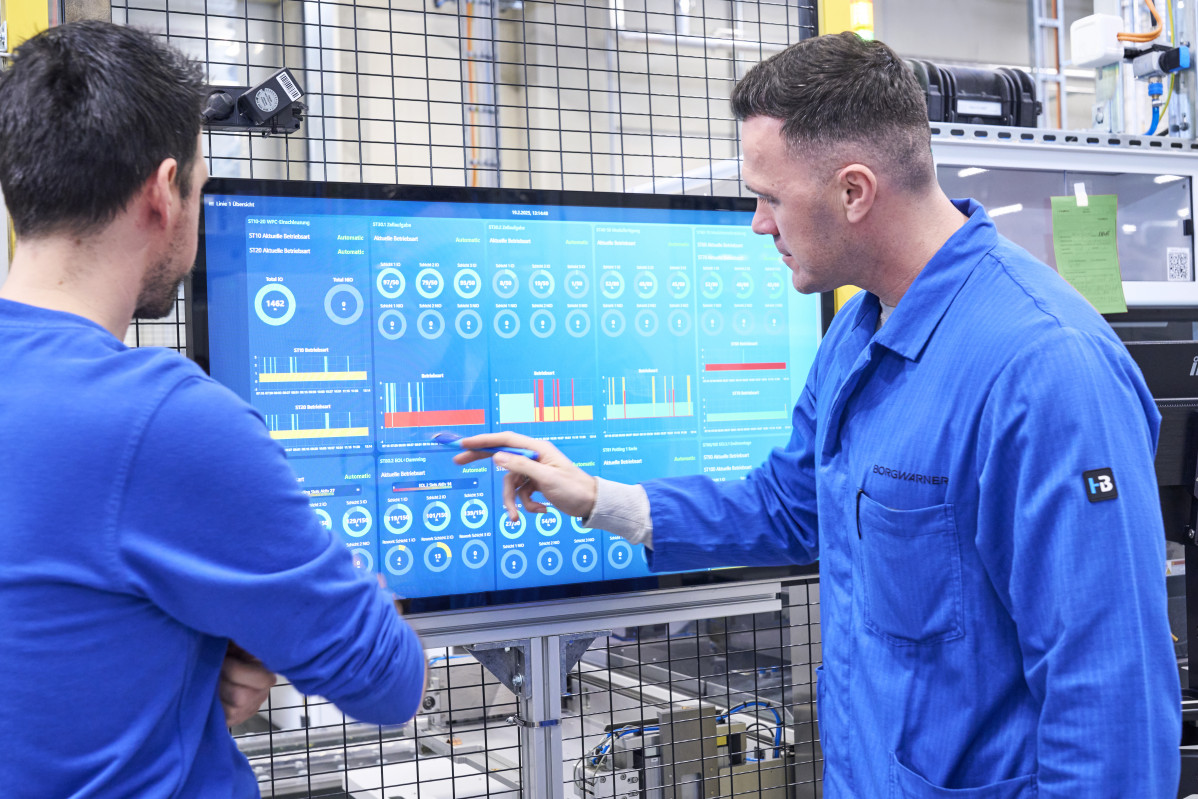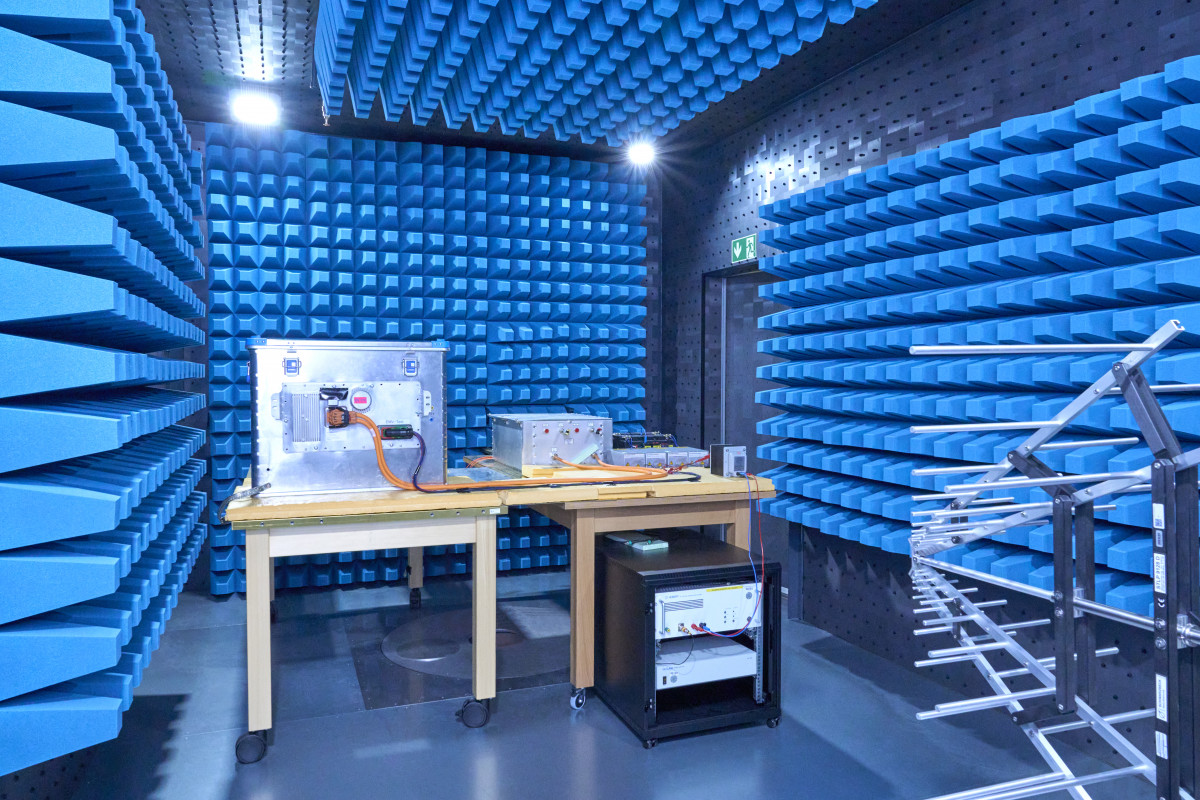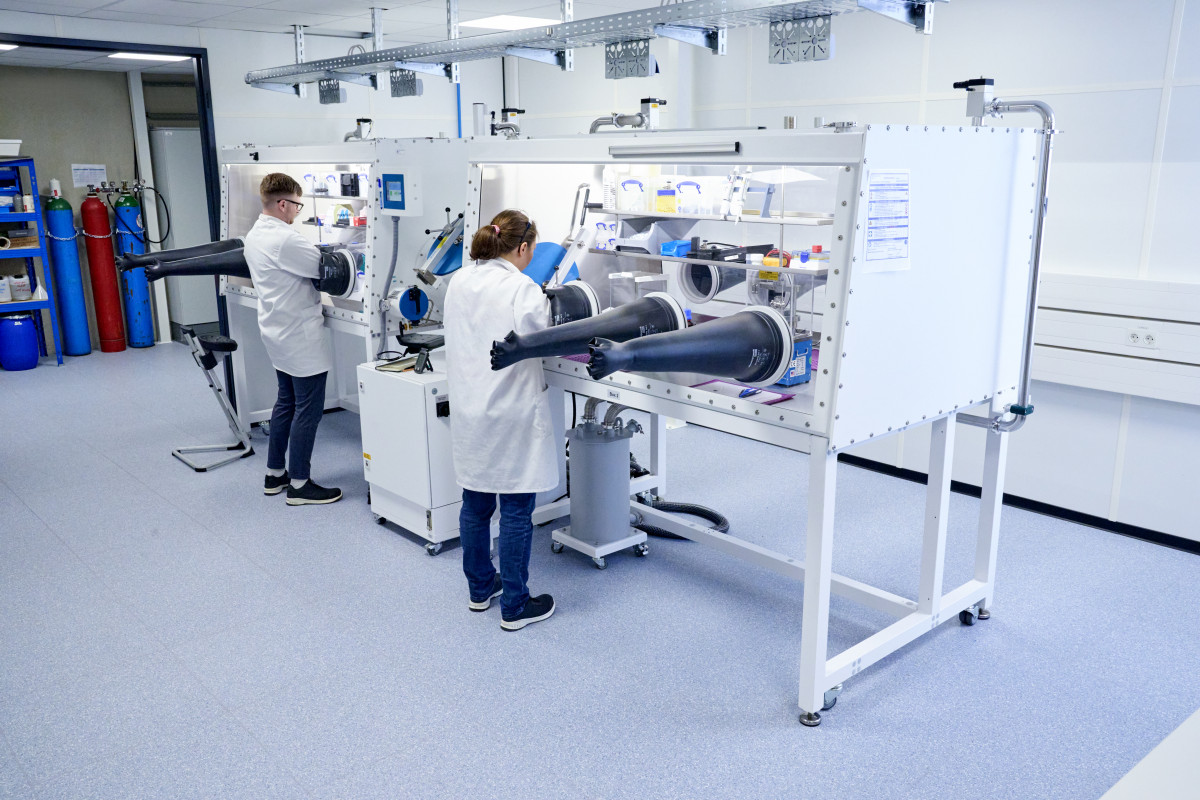BorgWarner strengthens a development and production site in development and production centre in Germany

In a recent presentation to the international press European press, BorgWarner detailed the development, manufacturing, testing and sustainability capabilities of its Darmstadt factory in Germany. Beyond its core business lines of powertrains and engines, improving the performance of combustion and hybrid vehicles, BorgWarner is moving forward in a growing portfolio of products focused on electric mobility. Its growing offer extends to batteries, electric motors, powertrains, power transmissions and thermal management. Lea este artículo en castellano
As the only Spanish media, we were able to see for ourselves, together with European and specialist journalists, at the US multinational facility at Darmstadt (Germany). This is the European nerve center for large batteries for heavy commercial vehicles, the marine industry and heavy machinery vehicles. ‘The value proposition focuses on new levels of fuel reduction and long vehicle life for commercial vehicles through electric and hybrid technologies for a wide range of commercial vehicles,’ explains Bernd Fritsch, Head of Product Strategy and Business Development.
The value proposition focuses on new levels of fuel reduction and long vehicle life for commercial vehicles through electric and hybrid technologies (Bernd Fritsch, Head of Product Strategy and Business Development)
The complex in Darmstadt, including plant and technical center, is part of an overall network of the electrification solutions business together with Auburn Hills, Michigan (also with a technical center), and Seneca, South Carolina (plant), both in the United States; Shanghai, China (plant and technical center) and Piracicaba, Brazil. The goal is to increase from 30,000 battery packs in 2024 to 54,000 units, or from 3.0 GWh to 5.4 GWh.

With 850 employees and certified according to IATF16949, ISO14001, ISO45001, the Darmstadt complex is complemented by a nearby production facility in Langen. Both facilities produce Gen3 ultra high energy (UHE) battery packs and modules, battery management systems (BMS), removable contactor boxes (RCB), cylindrical based battery packs, vehicle interface solutions, multi-string manager (MSM+), junction boxes and data loggers. Pawel Tetela, general manager of the plant, notes that ‘series production started in 2022 and in the first two years a volume equivalent to 2,4 GWh was achieved. After completing the commissioning of Line 1, we will complete Line 2 in 2025, with a maximum capacity of 3.5 GWh/year’.
One platform for different applications
In the case of batteries, BorgWarner in Darmstadt relies on a platform approach for large volumes, underpinned by high product quality based on automated and user-efficient production lines. In the case of heavy commercial vehicles, trucks and buses, work is being done on adapting the mechanical interface, software features and electrical components.
In a second area, work is being carried out on standardised requirements to meet different customer applications. Outside of road mobility, BorgWarner's solutions equip ships, excavators, snow ploughs, crane carriers, heavy stackers and tractors. Examples are Junttan's pile driving rig vehicle or Hungary's first articulated electric bus, the world's lightest electric bus with a steel body, a range of 300 km with 25% less batteries and third generation liquid-cooled nickel manganese cobalt (NMC) batteries developed by BorgWarner.

Advanced battery roadmap
BorgWarner's strategy in advanced battery development is a third-generation nickel manganese cobalt (NMC) battery, setting a benchmark in energy density, accompanied by continuous improvements and a high level of modularity to ensure compliance with all vehicle legislative requirements. In parallel, progress is being made in the development of lithium-ironphosphate (LFP) batteries, where we achieve ‘the best value for money product based on state-of-the-art LFP blade cells. A flexible platform meets the needs of the electric commercial vehicle market,’ says Johannes Rossmanith, R&D director.
A flexible platform meets the needs of the electric commercial vehicle market (Johannes Rossmanith, R&D director)
The next step is the future GoNext platform, which will be developed to ’be best-in-class by setting new TCO (total cost of ownership) standards in the market. We intend to create additional value and maintain continued product leadership,’ adds Rossmanith.
From the foundation of a modular hardware platform and an independent software platform for future products, BorgWarner focuses its leadership on continuous improvement of functional and safety integration; optimization of vehicle capabilities, product evolution in cell performance, global production coverage and sustainability-oriented design.
In the case of LFP batteries for commercial vehicles, BorgWarner focuses its efforts on responding to the different battery locations on the roof, chassis or floor of the vehicle demanded in the market. It has a family of four products based on Blade LFP cells in various sizes (compact pack, high pack, cube pack and flat pack) to meet different vehicle architectures.
The company highlights the partnership relationship with FinDreams Battery (a subsidiary of BYD) that will supply LFP blade cells and battery pack manufacturing equipment for local production. BorgWarner will design the LFP battery packs according to the requirements of the global markets, leveraging its own battery expertise and FinDreams Battery's expertise in blade cells.
Circular ecosystem
The entire strategy in BorgWarner's battery business is aligned with sustainability guidelines, according to which ‘our teams pursue emission reductions in SBTi Scope 1, 2 and 3,’ says Dr. Björn Eberleh, Manager of Product Integrity. ‘They do this through decarbonisation tools, which provide insights and recommendations on how our plants can reduce emissions. Smart metering enables real-time measurement and reduction of energy consumption at most of our locations. The Decarbonisation Incentive metric rewards our employees for continuous improvement.’
Eberleh details that ‘we have dedicated work streams to reduce Scope 3. We drive the sourcing of environmentally friendly materials (such as aluminum and steel) and the reduction of CO2 emissions from our suppliers. We design new products, considering the life cycle analysis footprint and the Re-X concept. We extend our sustainability commitments to our supply chain, monitoring performance and compliance; driving emissions reductions in collaboration with our suppliers; and incentivising suppliers by linking ESG criteria to sourcing decisions. 81.6% of high-impact and high-risk suppliers have successfully completed the BorgWarner ESG questionnaire. We will roll out training on key sustainability topics to all our production suppliers by the end of 2025’.
We have dedicated work streams to reduce Scope 3. We drive the sourcing of environmentally friendly materials (such as aluminum and steel) and the reduction of CO2 emissions from our suppliers (Dr. Björn Eberleh, Manager of Product Integrity)
We have dedicated work streams to reduce Scope 3. We drive the sourcing of environmentally friendly materials (such as aluminum and steel) and the reduction of CO2 emissions from our suppliers
The so-called Circular Battery Ecosystem (CBES) ranges from the mining and refining of materials through cell production and battery system manufacturing to the application in the vehicle. At the various end-of-life stages, recycling, remanufacturing and reuse operations are undertaken. ‘We see the battery life cycle as a circle to improve sustainability and maximise product value,’ adds Dr. Eberleh.
R3
The R3 philosophy (remanufacture, reuse and recycle) is shaped by the following processes. In remanufacturing, the battery is used for the same purpose for which it was originally designed. Components that still work are used; worn components are replaced with reconditioned or new components.
In reuse, the battery or its components, including especially the cells, are used for a purpose other than its original design. Generally, this is a stationary application, as it is less demanding in terms of energy and power density. The used battery from an electric vehicle serves as an energy storage system (ESS) for up to about ten more years, with a battery life of more than 80 %. Finally, in recycling, damaged or completely worn out batteries undergo a recycling process to recover the materials.
BorgWarner stresses that they are already working with proven technologies that already exceed the requirements for 2027. Separation, dismantling, heat treatment and shredding processes are used. Electronic components can be easily separated from the cells. This significantly improves the purity of the hydrometallurgical process result.
In addition, to its traditional business lines, BorgWarner joins a battery division focused on large vehicle applications. The company has a strong structure in the Americas, Europe and Asia to address the growing trend of electrification in multiple applications for commercial vehicles, trucks, buses, boats and heavy-duty vehicles.
Wide range of tests
The Darmstadt complex has extensive, state-of-the-art facilities for the analysis and testing of batteries, their components and materials. Analytical technicians test components for corrosion, vibration, durability, microscopy, behaviour in different environments and temperatures, electronics, imaging, washing, charging and discharging, and electromagnetic compatibility.


El espacio de innovación y museístico de Zaragoza reúne a expertos de ACC, Powerco y Stellantis

A poco más de una semana para su inicio, Motortec 2025, del 23 al 26 de abril en IFEMA MADRID, ha alcanzado un récord histórico de recepción de candidaturas en su Galería de la Innovación.

Charlamos Jota Sierra, director del Industry 4.0 Congress, para conocer todo sobre la que fuera la novena edición del congreso. Una información de Irene Díaz.

AMT–Advanced Machine Tools ha finalizado su segunda edición con una afluencia de 16.889 profesionales, consolidándose como referencia en el sector y reforzando su posición en Barcelona. La cita ha tenido lugar de forma simultánea a Advanced Factories, la mayor feria de automatización industrial del sur de Europa.

El directivo de Siemens y su familia perdieron la vida en un accidente de helicóptero en Nueva York,
